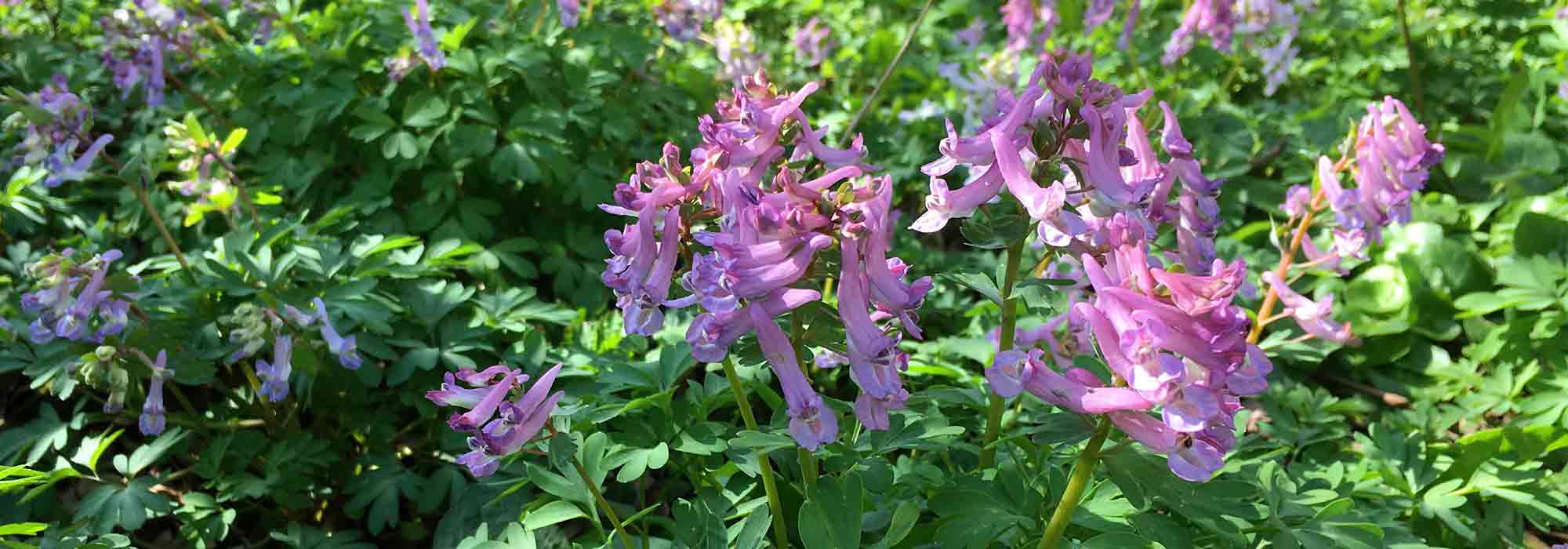
How to choose Corydalis?
Buying guide to make the right choice
Contents
Corydalis are small perennial plants that reach heights of between 30 and 45 cm. Highly valued in borders or pots, they thrive in shaded or semi-shaded situations, showcasing their clusters of flowers in blue, white, red, yellow, or purple, depending on the varieties. For the most part, they have deciduous green foliage that contrasts with flowers of different colours depending on the varieties. The long-lasting flowering begins in May and can continue until autumn. Hardy, tolerating temperatures down to -15°C and easy to grow, they tend to naturalise over time once established in fertile, well-drained, and light soil.
Here are some tips for choosing the varieties suited to your garden and preferences from our range of corydalis.
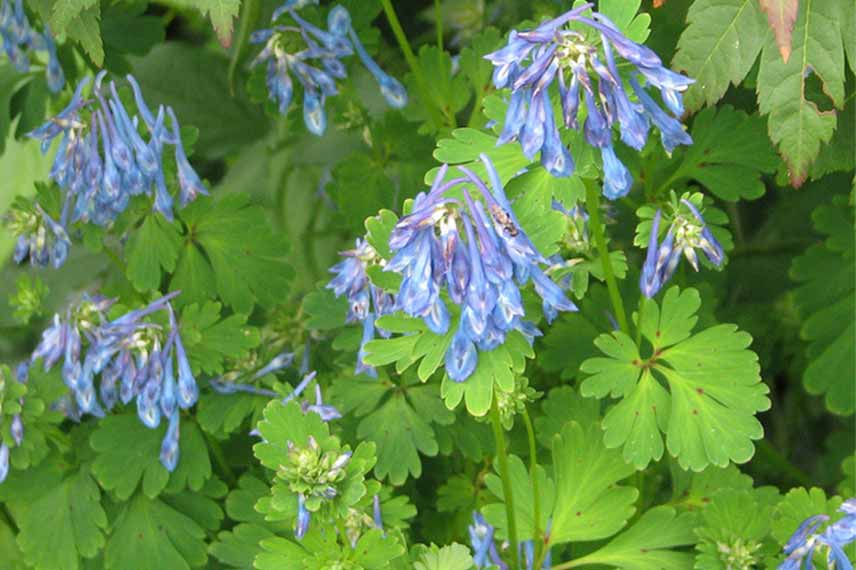
Fall for Corydalis, an easy-to-grow perennial plant!
According to its height
Corydalis are medium-sized perennial plants. Often used to brighten the front of borders, the flower spikes rise above divided foliage and typically reach between 15 and 30 cm. When planted alone, they form a dense, compact clump and are used as groundcover in certain garden designs. Also consider Corydalis ‘Blue Summit’ and lutea, which develop aesthetically pleasing stems and foliage between 40 and 45 cm in height. Mix several varieties to play with flower colours and create layers of foliage.
Read also
Corydalis: planting, growing and careAccording to the colour of the flowers
The colour range of Corydalis is quite varied. Here are some examples of shades to choose from according to your preferences:
Blue Corydalis
Most varieties bear numerous clusters of flowers in long tubular blue shades, more or less pronounced, such as the varieties ‘Craigton Blue’, ‘Porcelain Blue’, ‘Blue Panda’, or ‘Purple Leaf’. Mix these tones with the electric blue of ‘Blue Summit’, which also has the advantage of releasing a sweet fragrance.
Yellow Corydalis
More surprisingly, dare to choose the very bright yellow of the variety ‘Canary Feathers’ and Corydalis lutea.
Red Corydalis
For even more originality in your borders, grow Corydalis ‘Firebird’, with flowers of a rosy red.
Corydalis Purple
For pastel enthusiasts, cultivate Corydalis with pink-purple flowers like the variety ‘Blackberry Wine’.
White Corydalis
Try your hand at a tuberous and perennial Corydalis with white flowers with Corydalis solida ‘White Swallow’.
No matter the colour of your Corydalis flowers, these perennial plants will provide contrast with foliage in shades of green, grey, and blue.
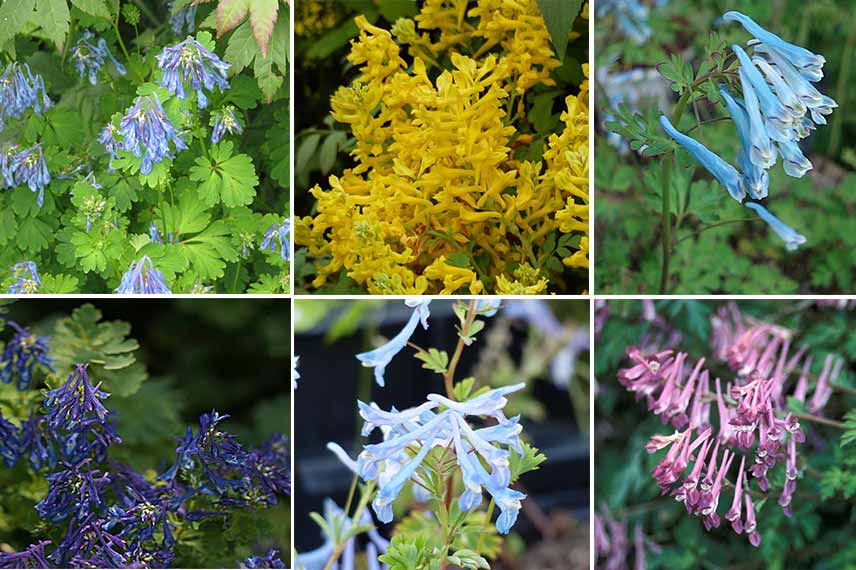
Corydalis flexuosa ‘Purple Leaf’, ‘Canary Feathers’, ‘Blue Panda’, ‘Blue Summit’, ‘Craigton Blue’, and ‘Blackberry Wine’ © Terra Nova Products (from left to right and top to bottom)
Discover other Corydalis
View all →Available in 1 sizes
Available in 1 sizes
Available in 2 sizes
Available in 1 sizes
Available in 1 sizes
Available in 1 sizes
Available in 1 sizes
Available in 1 sizes
Available in 1 sizes
Available in 1 sizes
According to the colour of the foliage
The foliage of Corydalis is highly dissected, very similar to that of ferns and feathery. Full of lightness, it ranges from dark green to light green, often with a bluish or greyish tint for most Corydalis. Very aesthetic, discover Corydalis ‘Berry Exciting’, with astonishingly bright foliage. Its golden foliage, variegated with chartreuse green, provides contrast and brightens a partially shaded bed. To surprise your gardening friends, dare to try Corydalis ‘Chocolate Stars’ with dark brown-purple foliage in spring, becoming increasingly reddish during flowering.
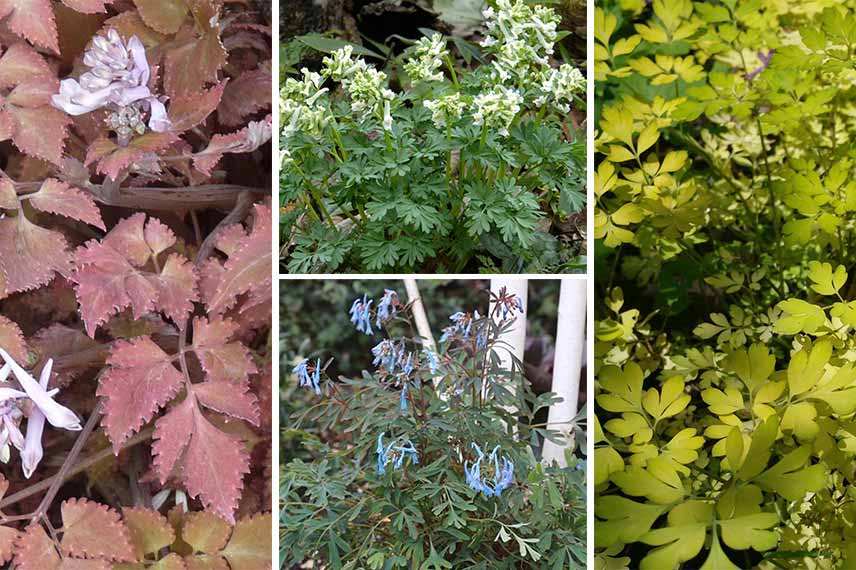 Corydalis quantmeyeriana ‘Chocolate Stars’, ‘White Swallow’, ‘Porcelain Blue’ and Corydalis ‘Berry Exciting’</caption]
Corydalis quantmeyeriana ‘Chocolate Stars’, ‘White Swallow’, ‘Porcelain Blue’ and Corydalis ‘Berry Exciting’</caption]
Read also
How to pair Corydalis?According to the flowering period
Corydalis flower from April to October, depending on the varieties, although most are covered in flowers in spring. The earliest bloomers offer flowering as early as March with Corydalis ‘Beth Evans’, followed by inflorescences from April that can last until July for some. Well-drained, cool soil is key to exceptional flowering. Varieties such as ‘Porcelain Blue’, ‘Berry Exciting’, and ‘Blackberry Wine’ make their appearance again from September to October.
According to the fragrance
The flowering of Corydalis is enough to satisfy the gardener. A little icing on the cake as some Corydalis offer a light sweet fragrance reminiscent of honey, such as:
- Corydalis elata ‘Blue Summit’, with large blue fragrant flowers from May to June;
- Corydalis flexuosa ‘Purple Leaf’, which is covered in fragrant flowers from April to May, a striking blue washed with mauve;
- Corydalis flexuosa ‘Porcelain Blue’, lightly fragrant, which bears clusters of tubular blue flowers from June to July and then from September to October;
- Corydalis ‘Blue Line’, with small intense blue flowers with a white throat that emit a sweet fragrance from May to October.
According to the use
Prefer to plant them in a shaded or partially shaded location and plant the Corydalis in well-drained, light soil.
A woodland floor or the area beneath a tree is perfect for them, and remember to place them in the foreground, in front of taller perennials or the foliage of ferns or Hostas. Combine them with other perennials of varying heights to create lush clusters. Consider pairing them with spring bulbs like Daffodils or Tulips to compose spring mosaics.
On a balcony or terrace, grow the Corydalis in pots or containers, either alone or in combination. Their small habit makes them suitable for hanging baskets.
In a rockery, a scree garden, or in the crevices of a stone wall, the small tufts of dense, compact foliage along with clustered flowers will enliven the mineral garden.
Keep in mind that the Corydalis can naturalise in your garden. The capsules release seeds that you can sow or let Mother Nature take care of for a wild and natural touch.
For further reading
- Read our article to successfully grow Corydalis: Corydalis: plant, grow and maintain
- To avoid any failures, we recommend planting appropriately; feel free to adopt our Plantfit web application!
- Subscribe!
- Contents
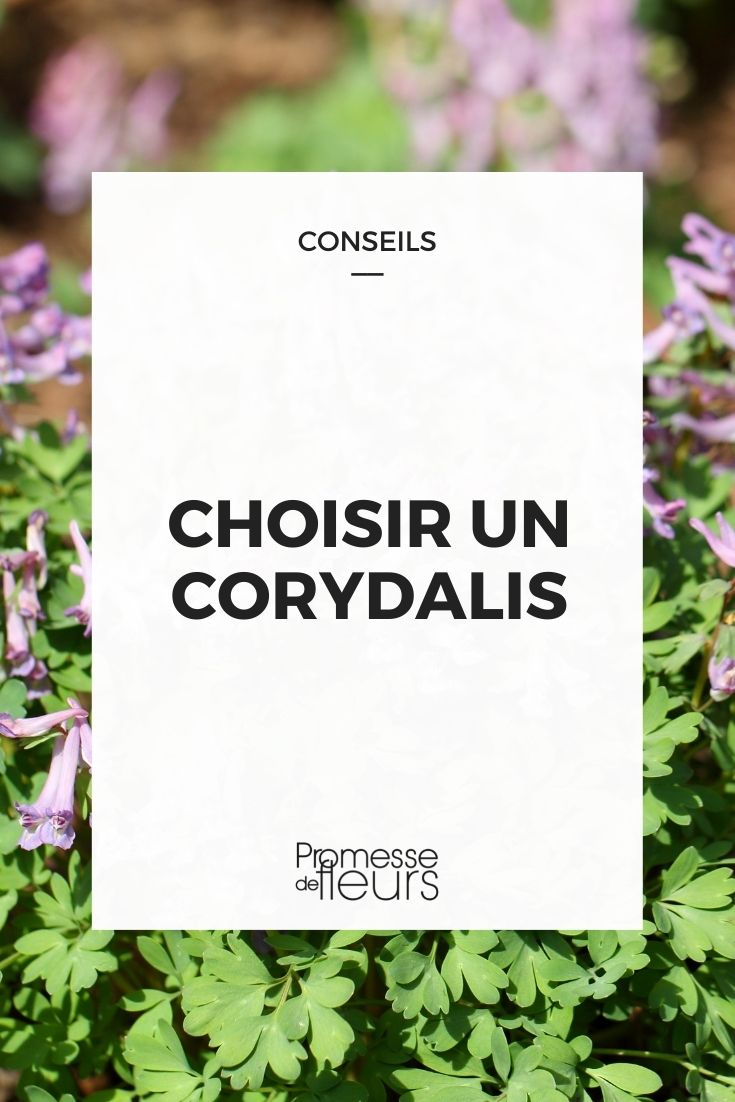
































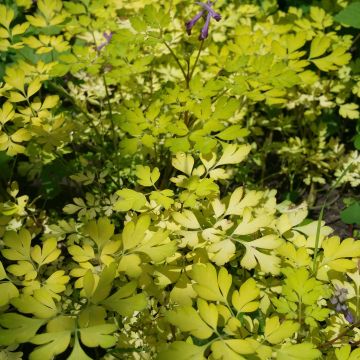


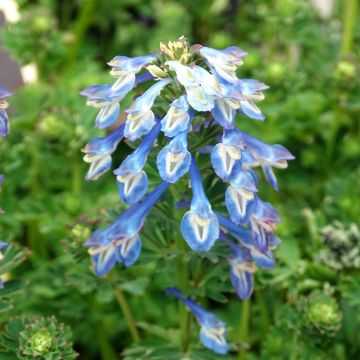
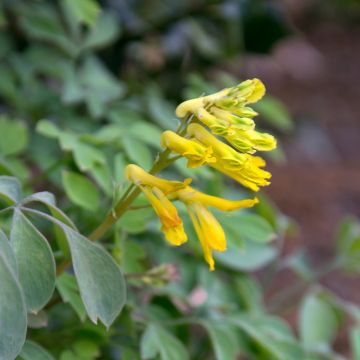


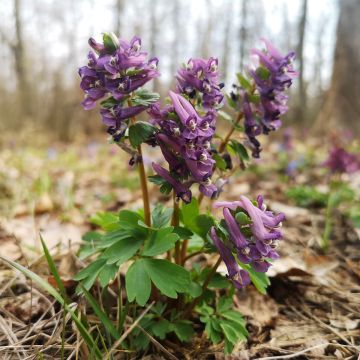
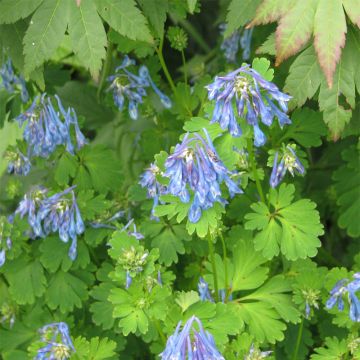
Comments